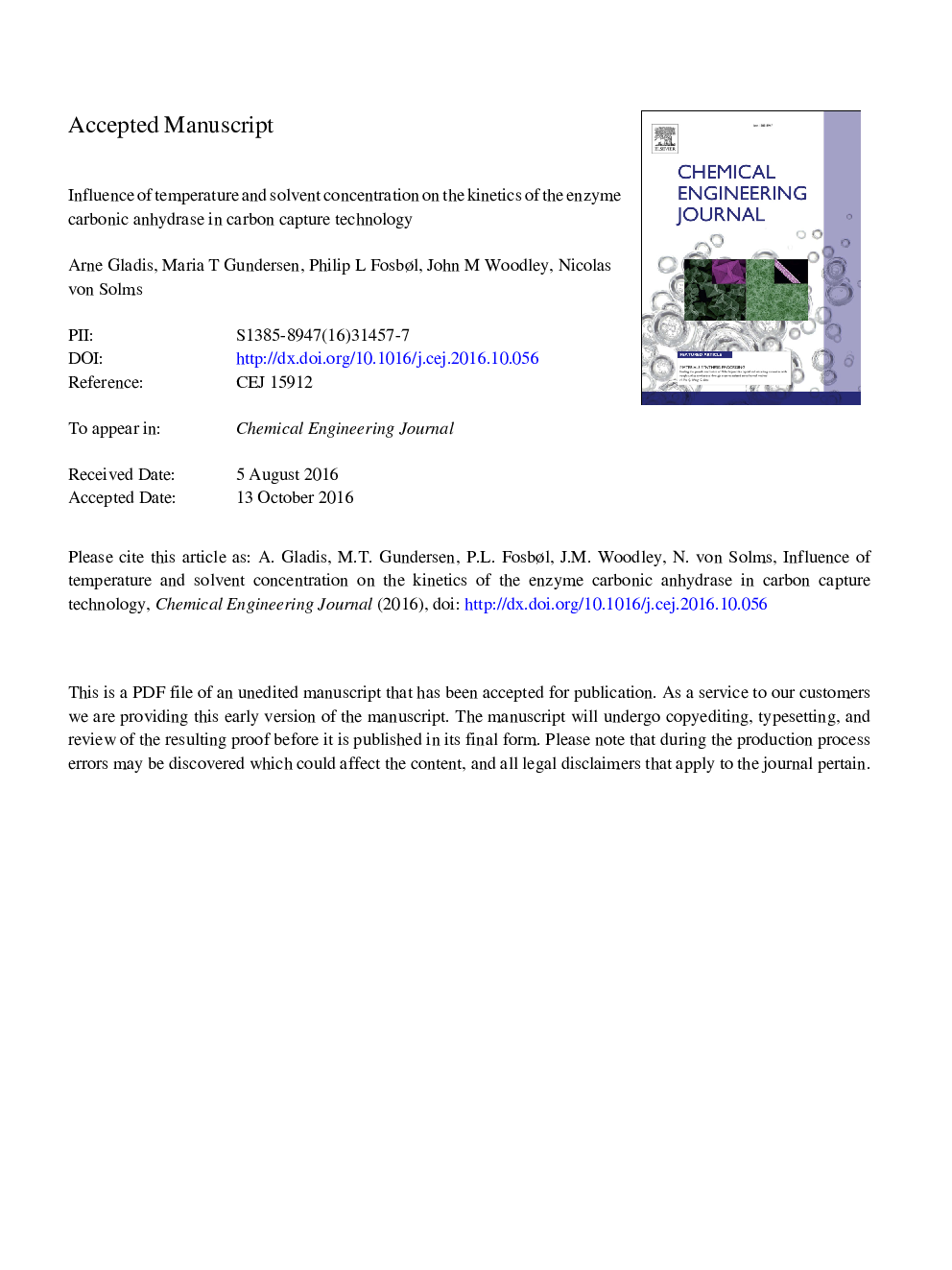| Article ID | Journal | Published Year | Pages | File Type |
|---|---|---|---|---|
| 4763630 | Chemical Engineering Journal | 2017 | 58 Pages |
Abstract
In this study the effect of carbonic anhydrase addition on the absorption of CO2 was investigated in a wetted wall column apparatus. Four different solvents: the primary amine monoethanolamine (MEA), the sterically hindered primary amine 2-amino-2-methyl-1-propanol (AMP), the tertiary amine N-methyl-diethanolamine (MDEA) and the carbonate salt solution K2CO3 were compared in concentrations from 5 to 50Â wt% in a temperature range of 298-328Â K with and without enzyme. Necessary mass transfer parameters such as liquid side mass transfer coefficient and solvent and enzyme reaction rates were determined and benchmarked to a 30Â wt% MEA solution. The study reveals that the addition of the enzyme carbonic anhydrase (CA) dramatically increases the liquid side mass transfer coefficient for MDEA, and K2CO3; AMP has a moderate increase whereas MEA was unchanged. The results confirm that just bicarbonate forming systems benefit from CA. The influence of temperature on the enzyme kinetics and mass transfer coefficients is different for different solvent types. A temperature increase resulted in lower liquid side mass transfer coefficient for MDEA and K2CO3 but in a higher coefficient for AMP. The overall first order enzyme reaction rate (sâ1) was linearly dependent on enzyme concentration for MDEA and K2CO3 at 313Â K. Temperature and concentration did increase the enzymatic rate constant slightly in the concentration range of 5-15Â wt% K2CO3 and significantly between 15 and 20Â wt%. The enzymatic reaction rate constant for MDEA decreased with temperature, the solvent concentration had a negligible on it. The enzymatic reaction rate for AMP rose with temperature and was higher for lower solvent concentration.
Related Topics
Physical Sciences and Engineering
Chemical Engineering
Chemical Engineering (General)
Authors
Arne Gladis, Maria T. Gundersen, Philip L. Fosbøl, John M. Woodley, Nicolas von Solms,
